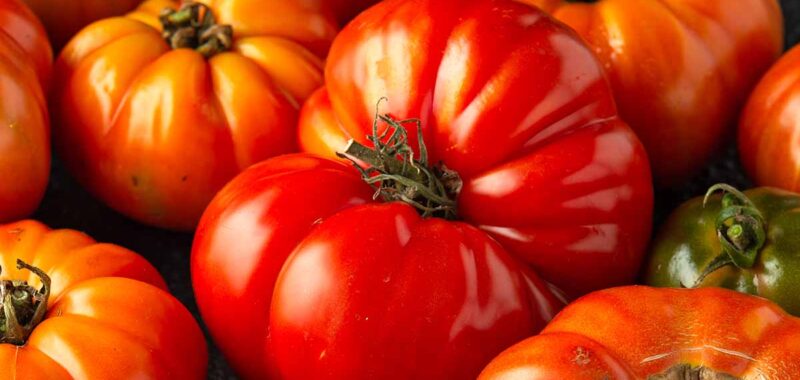Be prepared to water and feed more frequently than in-ground plants.
Beefsteak Cultivars to Select
There are quite a few cultivars available, each with its own delectable features. Here are a few that stand out for you to choose from.
Many stores and nurseries that sell plants will also carry young beefsteak seedlings in the spring, so check them out as well if you don’t want to start your own seeds.
Big Rainbow
Sure, think tomato and you see red. But why not change things up with an heirloom that has marbled yellow and red skin and flesh?
Described as tasting mild and sweet, ‘Big Rainbow’ fruits average a massive 22 ounces – that’s over a pound each!


‘Big Rainbow’
These plants take 85 days to reach maturity. Find packs of 30 or 100 seeds at Burpee.
Cherokee Purple
This heirloom variety is a pretty, deep, almost purple red, and it is flavorful to boot! These take 85 days to reach maturity, and you can read more about growing this heirloom cultivar here.
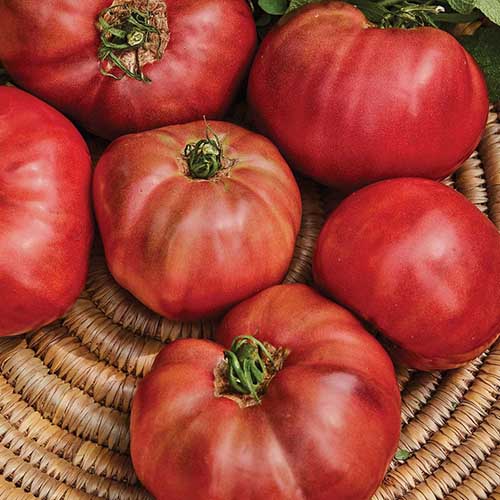

‘Cherokee Purple’
Seeds are available in packages of 50 or 100 from Burpee, as well as live plants that ship in season.
Pineapple
Described as having a fruity, fresh taste, these yellow-orange fruits sport few seeds and dense, crisp flesh. They do take 90 days to reach maturity, so be sure to order and start these seeds early.
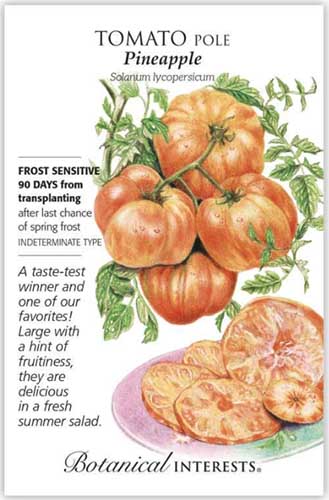

‘Pineapple’
‘Pineapple’ seeds are available at Botanical Interests in packs of 30.
Read our growing guide here.
Porterhouse Hybrid
Juicy, meaty, and solid are good descriptors for this big red boy, with fruits tipping the scales at two to four pounds!
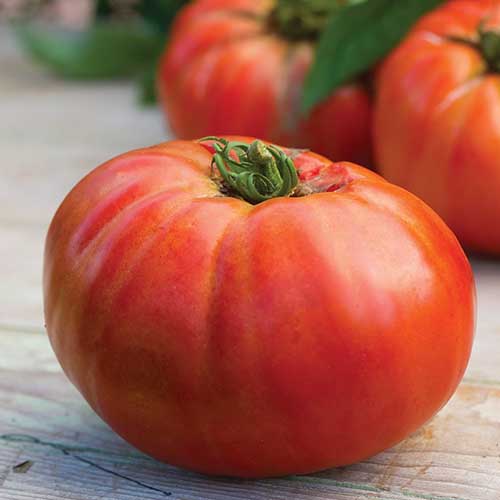

‘Porterhouse’
They might take 80 days to reach maturity, but harvesting this amount of tomato as a result is worth the wait!
‘Porterhouse’ is available at Burpee in either a 40 pack of seeds or as live plants.
Steak Sandwich Hybrid
Firm, rich, sweet fruits on vigorous, bountiful plants are what you’ll get if you select ‘Steak Sandwich.’
According to Burpee, these are the most delicious and perfect slicing tomatoes ever, and they only take 70 days to reach maturity.
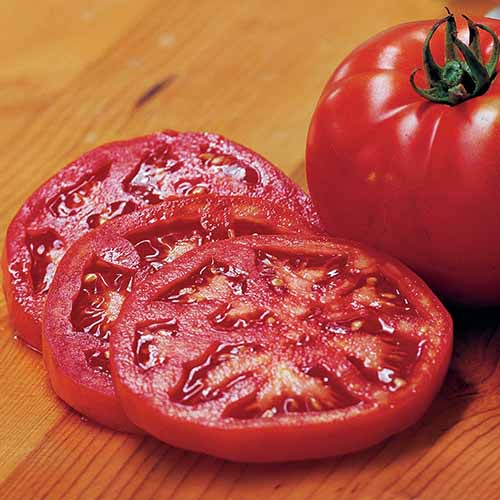

‘Steak Sandwich’
You’ll find this cultivar available in 50-seed packets from Burpee.
Super Beefsteak
These prolific plants produce large fruits that are thick, smooth, and delectable, and they come in the classic tomato red.


‘Super Beefsteak’
‘Super Beefsteak’ takes 80 days to reach maturity.
You can find seeds at Burpee in packs of 175.
Maintenance
These plants will need staking or caging, and sometimes even the portly fruits need supporting.
Stake soon after transplanting so you won’t damage the roots while trying to stake later, and tie up the plant as it grows. Since most types of beefsteaks are indeterminate, growth will continue throughout the season.


Mulch around each plant to maintain moisture, increase fertility, and suppress weeds.
You can use compost, leaves, or rotted hay like you used to increase the amount of organic matter in the soil at planting time.

